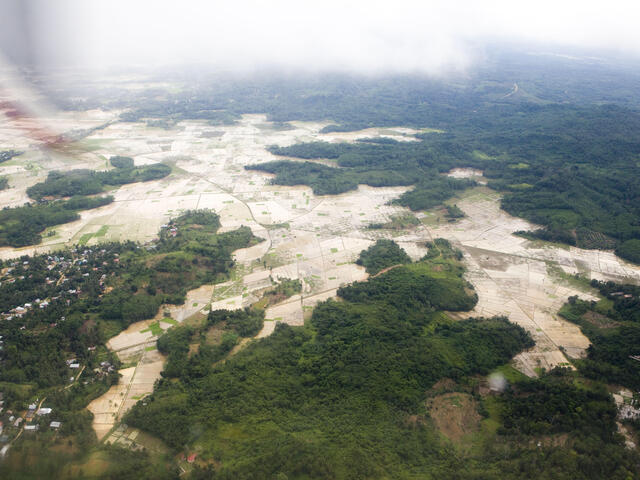The Transformation of Borneo’s Ecosystem: A Closer Look
Borneo, the third-largest island in the world, is home to one of the oldest rainforests and most diverse ecosystems on the planet. However, rapid deforestation, primarily driven by logging, palm oil plantations, and agricultural expansion, has severely impacted this once-pristine environment.
Navigating the Environmental Impact: A Call to Action
It is crucial to address the environmental consequences of deforestation in Borneo. Loss of habitat threatens the survival of numerous plant and animal species, including iconic endangered species like the Bornean orangutan and pygmy elephant. Moreover, deforestation contributes to climate change through increased carbon emissions and disrupts the delicate balance of the ecosystem.
Preserving Borneo’s Rich Biodiversity: Challenges and Opportunities
Preserving Borneo’s ecosystem requires a multi-faceted approach involving governments, local communities, corporations, and conservation organizations. Sustainable land-use practices, reforestation efforts, and the promotion of eco-tourism can all play a pivotal role in protecting and restoring Borneo’s biodiversity. Collaboration and commitment are essential to mitigating the environmental degradation that threatens this unique ecosystem.
Embracing Sustainable Solutions: A Path Forward
As awareness of the environmental issues facing Borneo grows, there is an opportunity for positive change. By adopting sustainable practices, investing in renewable energy, and supporting conservation initiatives, we can work towards a future where Borneo’s ecosystem thrives once again. Together, we can ensure that the transformation of Borneo’s ecosystem is one of conservation and restoration, preserving its unparalleled biodiversity for generations to come.
Indigenous Communities and Their Struggle for Forest Preservation
Indigenous communities around the world have long been at the forefront of advocating for forest preservation, not just for their own livelihoods but for the health of the planet as a whole. The cultural, spiritual, and economic ties that indigenous peoples have with forests make them natural stewards of these crucial ecosystems.
Despite their intrinsic connection to the land, indigenous communities face numerous challenges in protecting forests. Encroachment from industries, illegal logging, and government policies that prioritize profit over sustainability often threaten the ancestral lands of indigenous peoples.
Studies have shown that forests managed by indigenous communities have lower deforestation rates and greater biodiversity, highlighting the effectiveness of their traditional conservation practices. By empowering indigenous groups to maintain their way of life and land tenure rights, we can bolster global efforts to combat climate change and preserve biodiversity.
The struggle of indigenous communities for forest preservation is not just a local or regional issue; it is a global imperative. Recognizing and respecting the rights of indigenous peoples is crucial in achieving environmental sustainability and maintaining the delicate balance of our ecosystems for future generations.
Balancing Green Energy Ambitions with Environmental Conservation
As the world pushes towards renewable energy sources to combat climate change, it is crucial to strike a balance between green energy ambitions and environmental conservation efforts. One common pitfall to avoid is focusing solely on the benefits of green energy without considering the potential negative impacts on the environment.
Ensure that renewable energy projects are implemented responsibly by conducting thorough environmental impact assessments and engaging with local communities. Additionally, adopting sustainable practices in the construction and maintenance of green energy infrastructure can help minimize harm to ecosystems and wildlife.
By integrating environmental conservation principles into green energy initiatives, we can pave the way for a cleaner and more sustainable future while preserving the natural world for generations to come.
The Role of Government Policies in Protecting Borneo’s Heart
Breaking Down the Headlines
Government policies play a crucial role in safeguarding Borneo’s invaluable natural treasures. Recent regulations and initiatives aimed at conservation efforts have been pivotal in preserving the biodiversity and ecosystems of this ecologically rich region.
The Bigger Picture
Borneo, known for its vast rainforests and unique wildlife, faces significant threats such as deforestation, habitat loss, and wildlife trafficking. Government policies act as a shield against these challenges by setting guidelines for sustainable land use, promoting eco-friendly practices, and enforcing laws to combat illegal activities.
What This Means Going Forward
Looking ahead, the effectiveness of government policies in protecting Borneo’s heart will determine the fate of its natural heritage. Continued support for conservation strategies, community engagement, and scientific research will be essential to ensure the long-term well-being of Borneo’s ecosystems and species, benefiting both the environment and local communities dependent on these resources.
